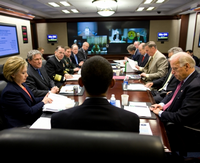The changes to the U.S. intelligence community (IC) effected after the September 2001 terrorist attacks in the United States were the most comprehensive in decades. Intelligence reformers sought to restructure the IC to make it more flexible and integrated, to improve the sharing of information both horizontally between federal agencies and vertically between Washington and state and local bodies, and to expand the capabilities at the IC's disposal. The reforms have achieved important progress in some areas. But a series of high-profile incidents and revelations -- including repeated turnover in the position of director of national intelligence, media exposés by the Washington Post and others, and the failure of U.S. intelligence to detect in advance several near-miss attacks against the U.S. homeland -- has raised concerns that old practices and patterns have undermined reform efforts.
In some ways, this should not be surprising. Old practices and patterns invariably persist given the lengthy time it takes to change bureaucratic cultures and authorities. More importantly, because American intelligence faces a constantly changing constellation of threats, intelligence transformation will be never-ending.
The Need to Share

